|
Hanthorpe

The road to Hanthorpe from
the A15
If you leave the A15 three miles north of Bourne, you will find a hamlet so small that you are likely to miss it if you pass through at speed but a stop of a few moments is worthwhile for its two streets contain several charming vistas.
Hanthorpe is not mentioned in the guide books and is perhaps no more than an extension of Morton village because it has no facilities of its own other than a post box and even the nearest public telephone kiosk is outside the village boundary. Many of the properties, however, are most attractive and several new developments have been added in recent years that are totally in keeping with their surroundings. Grey stone sits happily with red brick in this tiny community that has an air of permanent rural peace and there is even a village pond where farmers once washed their horses and carts but is now an environmental feature left to the toads and newts, insects, algae and other wildlife.
In September 2004, Hanthorpe was officially designated as part of the
adjoining parish and henceforth will be known as Morton and Hanthorpe.
The most imposing of the stone buildings here is Hanthorpe Farm, an early 18th century farmhouse that stands back from the road but overlooks the tiny village green. It has been in the same family for over a century, since 1897, but the present owner David Creasey says that there are no deeds to determine its exact date of construction although it is believed to be contemporary with the stone building across the road, formerly a public house, and bearing the date 1740. The house has a much older name and is referred to in the Ordnance Survey as Araucaria Farm, a reference to the two monkey puzzle trees (Araucaria araucana) which once grew in the front garden, now reduced to just one, but the name is less used today and so Hanthorpe Farm has become the popular choice.
Hanthorpe may be little more than a hamlet today but there was once a very grand mansion in the neighbourhood. Hanthorpe House was built in the Regency style in 1790 and has been attributed to Charles H Tatham, a Lincolnshire man as well as a London architect in the school of Henry Holland, pupil and son in law of Capability Brown, and it soon became the hub of this small community, dominating local agriculture and providing employment for many people who lived in the vicinity.
This late 18th century house would qualify today as a stately home and although the original owner is not known, it was occupied during much of its history by the Parker family, the first being
William Parker, a lawyer and a justice of the peace who had been born at Hailsham, Surrey, in 1792, and who had previously lived at Swayfield. He is known to have been in residence with his wife Ann and their children as early as 1842 and soon became established as one of the three principal landowners in the area along with the Marquess of Exeter and Lord Aveland. Improvements were made during his lifetime and in Kelly' Directory of 1885, the house is described as "a handsome and pleasantly situated mansion".
The Parker family were keenly interested in the village community and supported both religion and
education, providing money to help support the village school at Morton
where almost 140 boys and girls from the locality were taught. They were regular worshipers and benefactors of the Church of St John the Baptist at Morton, their parish church, and when major restoration was carried out on the roof and the 32 stained glass windows in 1860 at a cost of £2,000, the
family paid for much of the work.
Parker died in 1883 and the house was taken over by his son, also called William, who had been born at Swayfield in 1824.
He had been a lieutenant-colonel with the South Lincoln Militia and served
for many years as commanding officer of the Bourne Company of Volunteers. The 1891 census, when William was 67, shows that his wife Augusta, aged 58, was also living there together with two daughters, Flora and Katherine, who were both in their twenties, two grandsons, William, aged 6 and George, aged 5, and a guest as well as a retinue of servants including a cook, lady's maid, parlour maid, housemaid, under housemaid, kitchen maid and nurse. They also employed grooms, footmen, gamekeepers, gardeners, coachmen and a butler, but these were mainly people who lived locally and would therefore have been included in the census at their own
addresses.
Colonel Parker died in 1909 and the Chapel of the Resurrection in the
village church was restored in his memory the following year at a cost of
£400. Executors took over the running of the estate that was eventually
auctioned in 1911 and included almost 1,500 acres of land, forty houses
and various farm buildings, a most sizeable undertaking. Hanthorpe House
was not sold at this time and remained in the family but was uninhabited
for long periods during and after the First World War and soon afterwards
another descendant, Geoffrey S Parker had taken up residence by 1937 and
was making a living from farming.
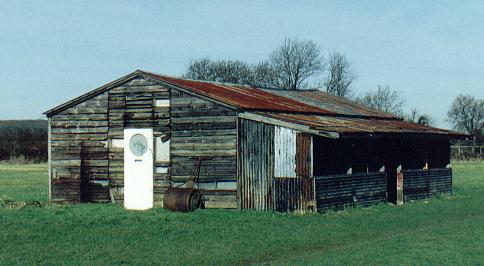
During the Second World War, the property was requisitioned by the
government for use as a prisoner of war camp, firstly for Italian and then
German captives. The wooden hut that until recently
stood on the football field at nearby Morton village where it was used as a very modest grandstand, was originally the picture house used by the prisoners at Hanthorpe
but has since been demolished and replaced by a modern building.
|
Hanthorpe House lasted for 160 years and was demolished in 1951 at a
time when such large properties had become a liability to their
owners, too large to live in and too costly to maintain, and
allowing them to remain empty and fall into disrepair or pulling
them down was an easy option. Today, they would either be taken over
by the National Trust or snapped up by developers for conversion
into luxury flats and maisonettes.
|
 |
Only the walled garden covering one acre, the coach house and a couple of
estate cottages remain, while the actual site of the house is now a
commercial timber yard.
|
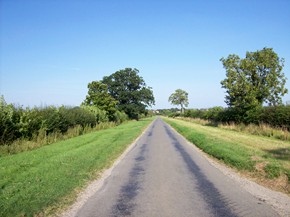 |
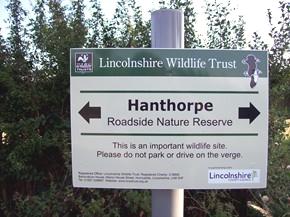 |
|
The roadside verges to the west of Hanthorpe
are rich in wildlife and have been declared official nature reserves
in the care of Lincolnshire Wildlife Trust. The one mile stretch
between the village and Edenham has wide grass verges on either side
that are known as the Hanthorpe verges, a protected environment
because they are rich in wild flowers including early purple
orchids, cowslips, primroses and even false oxlips. The area is
managed by Lincolnshire County Council, the highways authority, in
order that the flora and fauna are given better conditions to
prosper and grass-cutting, for instance, is only carried out after
spring flower seed has been set. Unfortunately, the protection order
is often ignored and although drivers of vehicles, particularly
heavy lorries, are asked not to park on them they are frequently
damaged. |
|
HANTHORPE IN PAST TIMES |
|
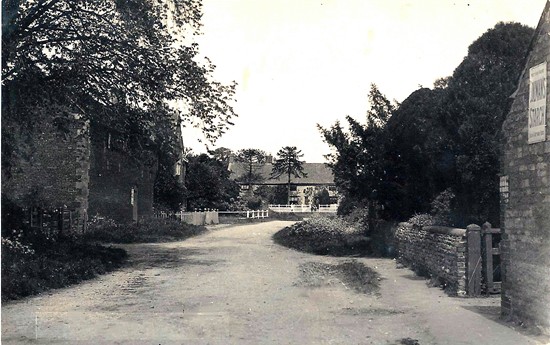 |
|
A picture postcard of Hanthorpe from 1900. |
|
 |
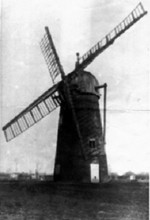 |
|
Stainfield Road and the mill at Hanthorpe which
was demolished circa 1910. |
|
 |
|
Hanthorpe from a picture postcard published
circa 1945. |
|
FROM THE ARCHIVES
Among the numerous officers of merit and
distinction who contributed by the sacrifice of their lives to the
success of the glorious battle of the 18th ultimo (Waterloo), we
regret to state that Major Robert Christopher Packe of the Royal
Horse Guards fell at the head of his squadron in a brilliant charge
on the French Imperial Guards.
Major Packe was the second son of C J Packe Esquire of
Prestwould, Leicestershire, and brother to C J Packe Esquire, of
Hanthorpe House, near Bourne, who had a son, Lieutenant G H Packe of
the 13th Light Dragoons, slightly wounded in the battle.
- news report from the Stamford Mercury, 7th July 1815.
An inquest was held at Morton, near Bourne, on the 22nd ult. on
the body of Charles Ravell, aged seven years, who came by his death
by accidentally getting his slop [a loose smock or overall] entangled in the spindle of a
windmill at Hanthorpe. He went to the mill on the previous Saturday
afternoon, accompanied by his cousin: they were on the second floor
when, after a short time, the cousin missed the deceased and went to
the floor above where he found him, his slop entangled in the
spindle which was carrying him round, and he appeared to be dead. He
ran down to inform the miller who instantly stopped the mill and
went to the deceased, but life was quite extinct. The miller had
just before taken the deceased down from the second floor and told
him to stop or he would be hurt: but whilst he was engaged in taking
some cloth off the sails, the wind having just freshened, the
deceased contrived to get on the third floor and was killed.
Verdict, accidentally. - news report from the Stamford Mercury,
3rd December 1841. |
See also Morton Colonel William Parker
Hanthorpe House
German prisoners of war

Go to:
Main Index Villages
Index
|








